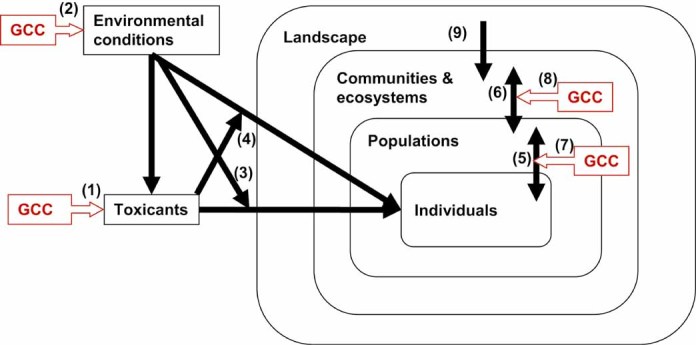Fig. 1.

We address combined impacts of global climate change (GCC) and chemical stressors across biological levels of organization in the following way: The term GCC represents climatic drivers (temperature, precipitation, etc.). Environmental conditions represent other abiotic factors (hydrologic regimes, ultraviolet radiation, nutrient concentrations, etc.). Global climate change can affect the fate and exposure of toxicants directly (arrow 1) or through altered environmental conditions (arrow 2) 9. Individuals can be impacted by GCC-related changes in toxicant exposure and/or other environmental conditions; interactions between these factors can result in climate-induced toxicant sensitivity (arrow 3) or toxicant-induced climate-sensitivity (arrow 4) 13. When the combined toxicant and GCC impacts on individuals propagate higher levels, they can be modified by population-level (arrow 5) and community-level (arrow 6) processes. Such population- and community-level processes can in turn be impacted by GCC, directly or indirectly (arrows 7 and 8). Finally, landscape properties may influence the responses of populations and communities to combine toxicant and GCC effects (arrow 9). [Color figure can be seen in the online version of this article, available at http://wileyonlinelibrary.com]
